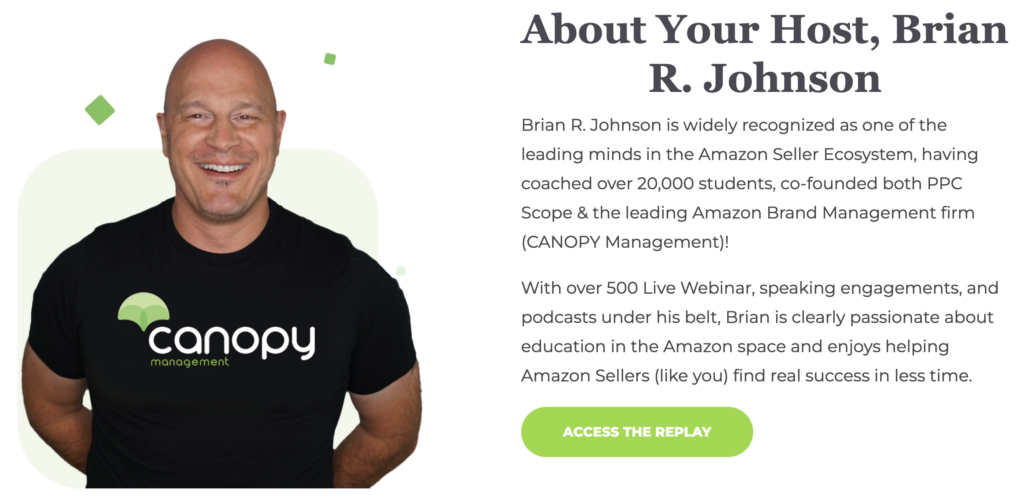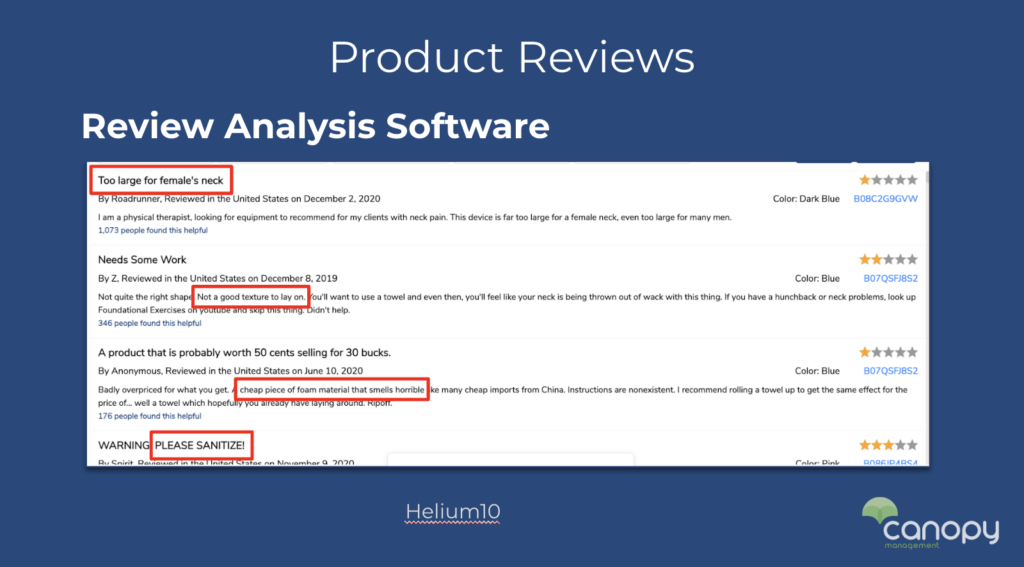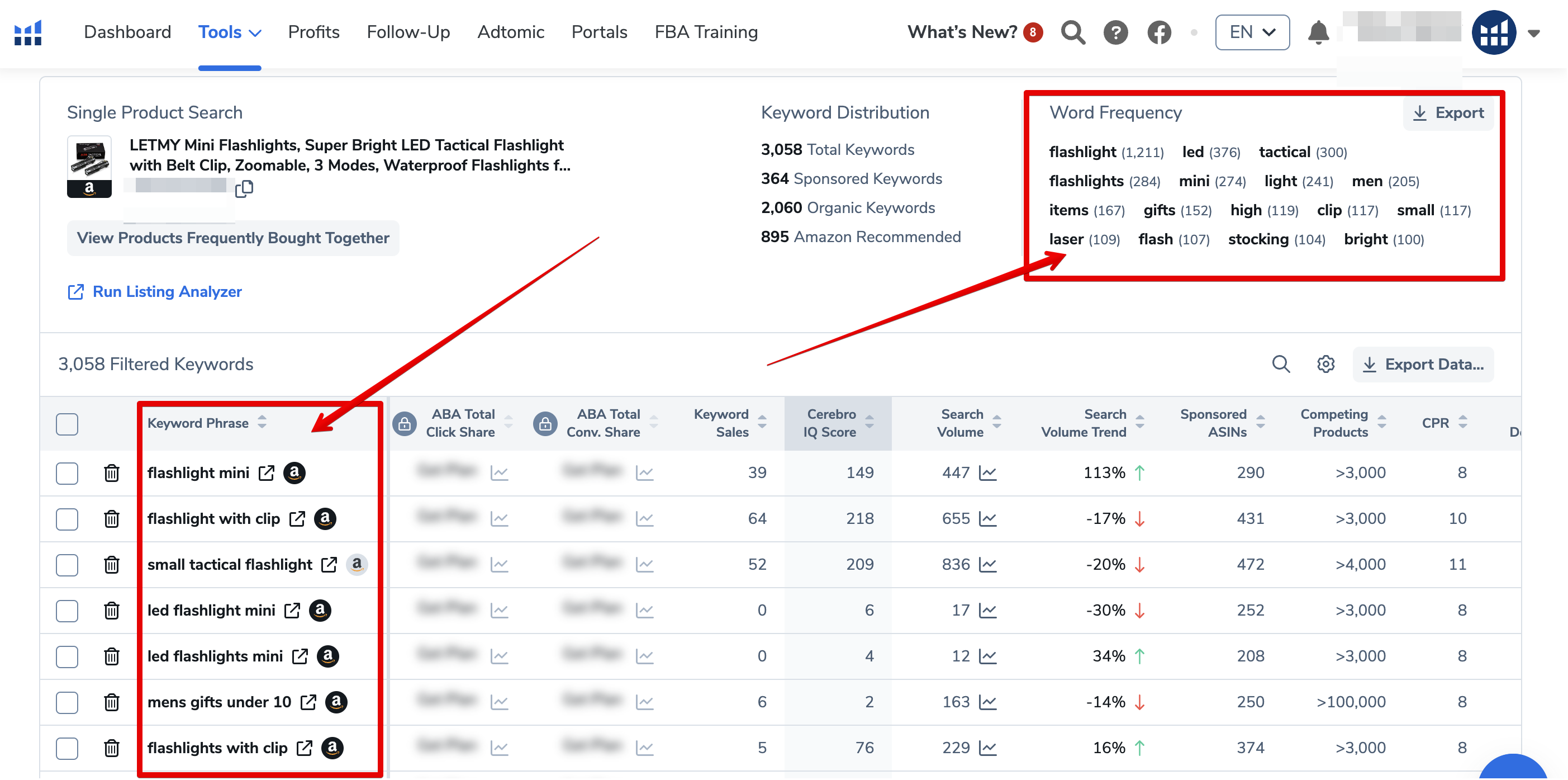How to Transform Any Product Listing Into a Year-Round Cash Flow Machine
How Do You Take Your Amazon Listing From Zero to Hero? Discover Brian R. Johnson’s 3-Step System in This Exclusive Masterclass Training!

Amazon reviews are one of the most overlooked ways for you to build your eCommerce brand. Amazon reviews offer valuable information that give you a clear understanding of what really matters to your prospective customers.
Just think! These are customers in your selling niche that have stopped what they’re doing to write about an Amazon product.
That is pure gold to an Amazon seller.
Doing final research on a new Amazon product? Taking the time to look through Amazon product reviews for similar products will tell you where your competitors have failed or succeeded. For example, Amazon reviews pointing out serial breakage problems for a similar product will help you understand the need for additional packing steps.
Thinking About Hiring an Amazon Management Agency?
Canopy’s Partners Achieve an Average 84% Profit Increase!
Let’s talkAs Amazon’s ecosystem matures, both products AND sellers are becoming more sophisticated every day. Unfortunately for Amazon shoppers, the EXPERIENCE isn’t necessarily keeping pace with all of that improvement.
Amazon product reviews are the best way to understand that.

The Latest Amazon Training from Canopy Management
We’d love for you to become part of Canopy Management’s family of Amazon Agency Partners that we work with on an ongoing, day-to-day basis.
I’m Brian R. Johnson from Canopy Management, and I wanted to expand the reach of CANOPY’s Amazon marketing services even further. Because of that, this recent Amazon Training titled “How to Take Your Existing Product From Zero to Hero,” is available to all.
Click on the link here, or on the screenshot above to be directed to the Amazon Training. In it, I take the time to go over IN DEPTH everything I cover in this abbreviated blog post.
I have helped over 20,000 brands grow on Amazon and sell over one billion dollars through ppc ad strategy, conversion rate optimization, and differentiation.
Differentiation is an Amazon Seller’s Superpower
As we’ve written about before, differentiating your Amazon product is a key step to becoming a successful Amazon seller. It’s also at the heart of great Amazon product listing optimization as well as a critical element of Amazon pay per click (PPC) advertising campaign strategy.
Differentiation helps you to identify and then strategically target niche keywords with your Amazon PPC ad campaign. That’ll help you save money and carve out a mini marketplace for yourself!
Keep in mind that the same things that make your eCommerce product STAND OUT are probably the same features that might be either overlooked or misunderstood by buyers. If an Amazon seller fails at properly optimizing their listing, there’s a good chance you’ll be able to read about it in a product review.
There are a number of available eCommerce software tools that make it clear that A LOT of ecommerce sellers are doing a poor job of optimizing their Amazon listings. Making sure that buyers really understand what they’re buying will not only help reduce returns, in many cases it’s the key to Amazon product differentiation.

A version of an old eCommerce saying goes something like this; “the best place to hide something is on the second page of an Amazon listing.”
The point is that many shoppers simply don’t look past the first page of search results. That’s why it’s SO IMPORTANT that as sellers, you take the time to carefully and thoroughly optimize the entire listing.
A fully optimized Amazon listing means that the listing itself is constructed with the keywords that you’ve collected through extensive research AND that the images (and video) are of high quality and are in accordance with Amazon’s guidelines.
To do that, you need to start with keyword research.
Keyword Research Comes First
Before you begin to optimize your Amazon listing, you first need to conduct keyword research. Software as a Service (SaaS) companies such as Helium 10 and Jungle Scout both have very good tools that will allow you to do just that.
For example, Helium 10’s Cerebro, their Amazon reverse-ASIN-lookup tool is a quick way to see what competitors are doing to get found on Amazon. If you’re already selling, just enter your own Amazon ASIN to see how shoppers are finding your product!
Or, you can run searches for potential keywords based on the individual product niche in which you’re selling.

To demonstrate, here’s a screenshot of a Cerebro keyword search related to an Amazon “tactical flashlight” product. All I’m going to do is enter the ASIN for the product in the Cerebro search bar and press the Get Keywords button.
As you can see to the right, it gives me a list of over 3000 keyword phrases associated with the product as well as a helpful “word frequency” breakdown.
Once you’ve done that, it’s time to start building your Amazon listing.
Amazon Listing Optimization Basics
Amazon listing optimization is a two step process, build your keyword list, then incorporate that list into your Amazon listing.
That’s how you boost your Amazon SEO and ranking.
There are four opportunities to weave your keywords into your Amazon listing:
- Product Title
- Key Product Features
- Product Description
- Backend Search Terms
Remember that you’re not just writing for the Amazon algorithm, you’re writing for human beings. You need to find the sweet spot between Amazon SEO copywriting and persuasive, customer-focused language that appeals to your target audience.
In this previously published post, we go through the entire Amazon listing optimization process, as well as several other strategies to boost your Amazon ranking.
Amazon’s Marketplace is Changing Faster Than Ever – Here’s How to Keep Up!
As we approach 2023, the big problem facing sellers is that the Amazon landscape is no longer consistent. Just a few years ago it was much easier for Amazon sellers to make long term projections. Now it involves a willingness and the ability to closely monitor your Amazon brand.
It’s no wonder that increasing numbers of Amazon brands are entrusting their accounts to Amazon management agencies.
Here’s a list of a few of the recent challenges that Amazon sellers now face:
- Amazon is increasingly burying organic search results
- Brands have been taught to emulate competitors
- Product-gaming methods are being closely monitored
- Inflation is pushing consumers to slow down spending
- Advertisers are overreacting to market conditions
Identify, Then Solve Your Buyer’s Pain Points
In this Amazon Training, I detail specific strategies that will allow Amazon sellers to IDENTIFY and SOLVE a prospective buyers’ pain points.
Does that mean most products aren’t solving customers’ problems?
Not exactly. What happens is that all too often the listing simply doesn’t acknowledge or illustrate the problems it does solve.
That’s why it’s critical to closely monitor your target audience’s feedback, on Amazon and social media, to identify where your product can solve dislikes, reduce the pain and ease the buyers’ frustration.
Clicking on the Amazon Training link here will give you the latest information on how you can transform your product’s lackluster sales into a source of consistent revenue . . . All without spending a fortune!
Learn how to identify patterns in reviews and social media threads, that will give you a much better feel for your competitive landscape.
Learn the simple, 3-step process for transforming any product listing into a year-round cash flow machine.

Canopy Management is Here to Help
Canopy Management is a “full service” marketing agency for Amazon sellers, and our team consists of former Amazonians, multi-million dollar sellers, and award-winning experts. When you consider the ways in which Canopy Management is able to help you grow your Amazon business, you’ll know why.
- Strategic Growth Planning
- Listing Copywriting Optimization
- Listing Photography
- Product Videography
- Advertising Management
- Customer Service
- Demand Side Platform (Amazon DSP)
- Amazon Posts
- Full Service Management
- Amazon Review Aggregation


